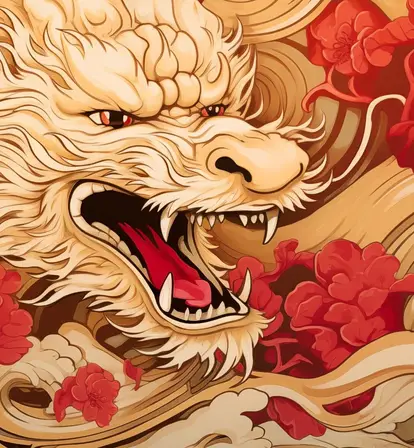Various cultures throughout history believed in dragons, likely as a way to explain fossils of dinosaurs and other prehistoric creatures.
Mythology and folklore about dragons can be found in a wide variety of cultures throughout history. While specific details may vary, legends about the beasts are among the most pervasive stories humans have ever told. They are so pervasive, in fact, that many have wondered: Are dragons real?
Scientists have generally agreed the answer is a resounding no, yet there is still something peculiar about how widespread the mythological creatures have been in human culture. Today, we can thank the likes of J. R. R. Tolkien and Dungeons & Dragons for the mass appeal of these fire-breathing, flying beasts, but historically speaking, did dragons ever exist? And if not, where did the idea originate?
Researchers have curiously proposed that belief in the existence of dragons evolved independently in Europe and Asia. However, even that theory does little to actually explain how this belief came about in the first place.
The most sensible way to explain the beasts would be to look to some actual creatures that could have inspired these myths. However, other scholars have suggested that there could be an even deeper explanation as to why so many different human cultures came to believe in dragons — one that might even be ingrained into the human subconscious.
How Dragons Have Been Portrayed Across The Globe
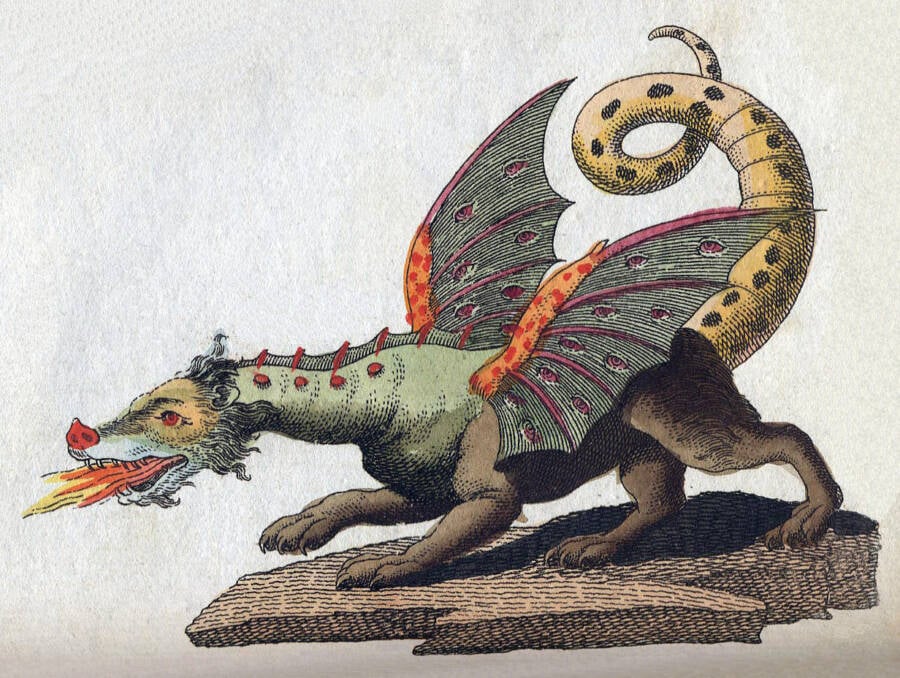
Public DomainA typical European-style dragon illustrated by Friedrich Johann Justin Bertuch in the early 19th century.
To understand how dragons have become so pervasive, we should first look at some specific examples of cultures that believed in dragons throughout history. In China and the British Isles, for instance, two distinct versions of the mythological beasts emerged.
European dragons have traditionally been portrayed as predatory creatures. In classic literature, they hoard gold and capture princesses. They burn down villages and are slain by gallant knights. These sorts of beasts are still featured prominently in popular media today, from tabletop games to video games, novels, and films. Generally, they are much heftier than their Eastern counterparts, mainly depicted as giant, winged lizards that can breathe fire.
The dragons that appeared in the medieval folklore of the British Isles are greedy and vile. They live in caves and feast on livestock, humans, and even goblins or fairies in some myths.
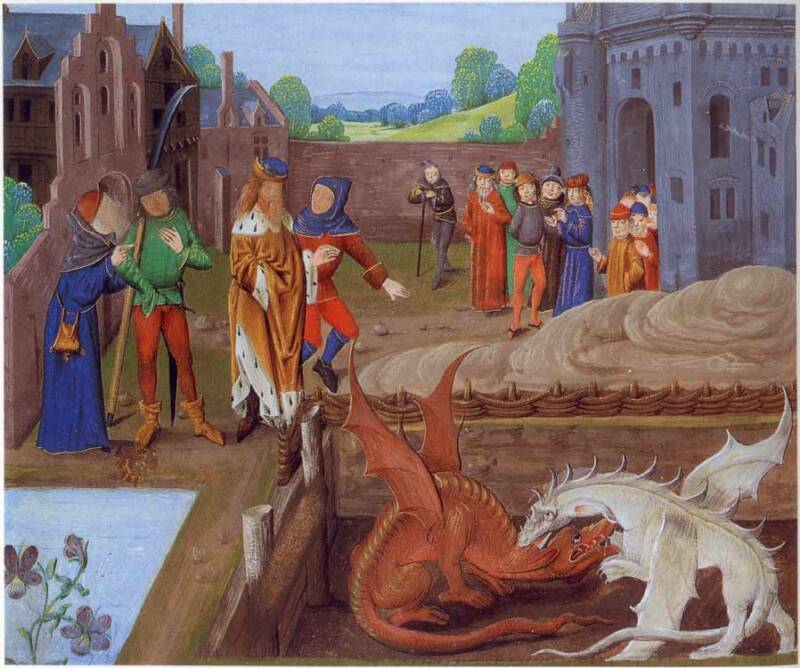
Public DomainA 15th-century painting depicting a battle between a white dragon (which represents the Anglo-Saxons) and a red dragon (the Welsh).
Asian dragons, particularly Chinese dragons, are almost the exact opposite of their European counterparts. They are slimmer, and though they can fly, they are generally portrayed without wings. In contrast to the beasts from medieval European folklore, their Asian counterparts are typically more benevolent and help people by bringing rain or good fortune. They are said to live in places with permanent water sources, such as rivers, rainforests, and swamps.
Even today, this contrast is evident. European dragons are still portrayed as greedy, evil creatures, such as in Tolkien’s The Hobbit. Asian dragons, meanwhile, are celebrated in festivals across the continent, and they even appear as part of the 12-year cycle of the Chinese Zodiac.
It’s clear that, aside from sharing a name and a few lizard-like qualities, the European and Asian dragons couldn’t be more different. This distinction is what has led scholars to conclude that belief in the existence of dragons developed independently in these regions. Yet, the similarities can’t be ignored. Why would so many people from such a wide variety of backgrounds have stories about giant, flying, lizard-like creatures? Surely, there must be some sort of scientific explanation for this.
Indeed, there are quite a few.
Theories About The Origins Of The Mythological Beasts
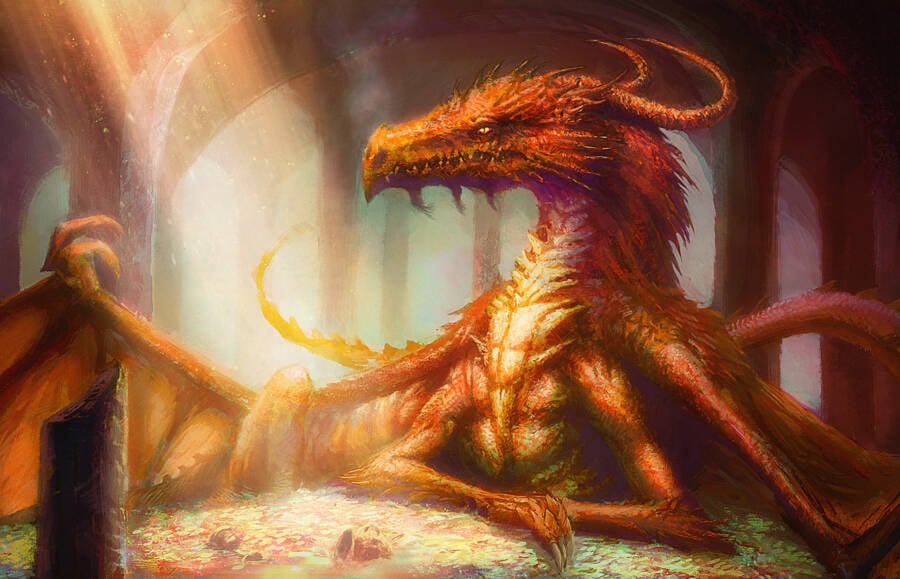
David Demaret/Wikimedia CommonsAn artist’s illustration of Smaug from J. R. R. Tolkien’s The Hobbit.
The most obvious theory about why people believed in dragons is also the most straightforward: dinosaurs. As BBC’s Science Focus magazine reports, people across Europe and Asia have historically mistaken dinosaur fossils for dragons. Even without this context, pictures alone could tell us this — the massive, scaled beasts look a whole lot like many dinosaurs, albeit with some fantastical embellishment.
And though we most often associate dragons, in the European context at least, with the Middle Ages, this was hardly the first time a dragon-like creature was mentioned in literature. The Bible, for instance, tells of a massive sea creature known as the Leviathan. Greek mythology featured a number of odd beasts, such as the Hydra. Even legends like that of the Kraken, though it does not look like a dragon, show how humans have always created massive, horrifying creatures that resemble the more mundane animals on Earth.
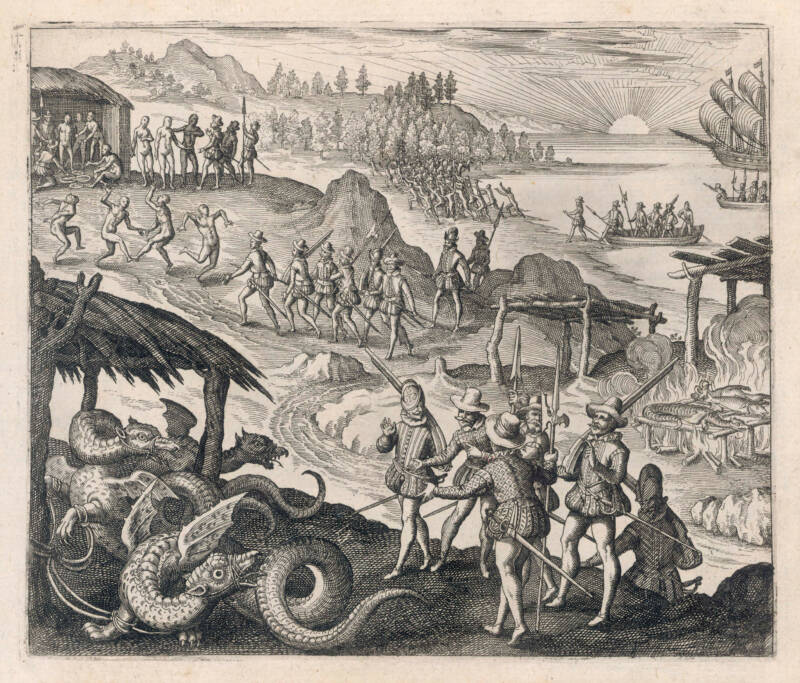
Chronicle / Alamy Stock PhotoA 16th-century illustration depicting Native Americans roasting and eating dragons.
Smithsonian Magazine offers up a few other ancient creatures that could fit the bill, including Nile crocodiles, goannas, and whales. Any giant animal could have been used as evidence for the existence of dragons, particularly during a time when belief in magic was much more common than it is today.
The magazine also cites anthropologist David E. Jones’ An Instinct for Dragons, in which he hypothesized that humans have a built-in fear of predators that includes snakes, birds of prey, and elephants. Therefore, it is entirely possible that, by some subconscious effort, humans combined these animals into one mythical apex predator.
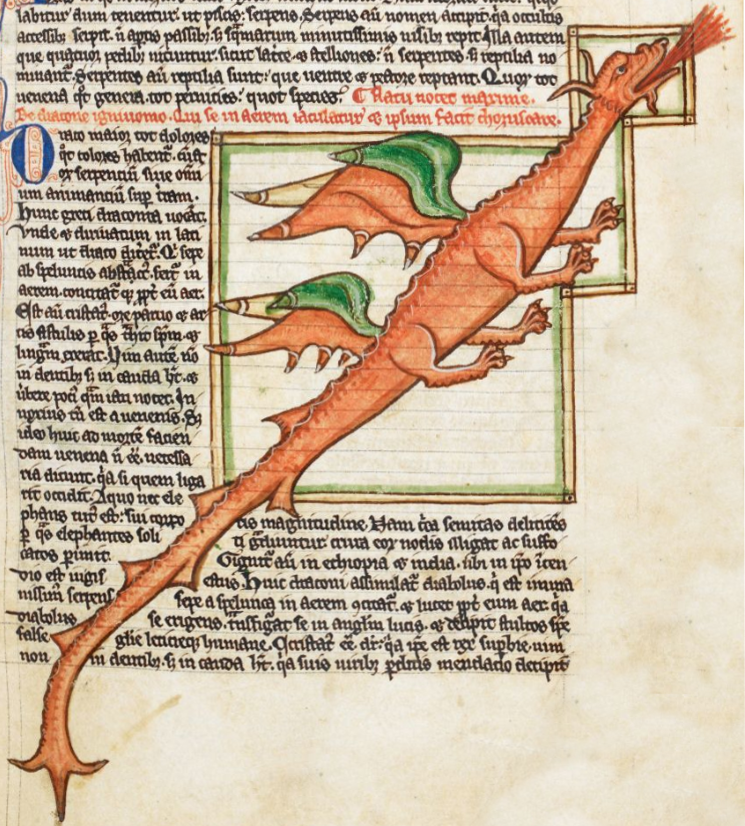
Public DomainA medieval manuscript dated to around 1260 C.E. that features the oldest known drawing of a modern western dragon.
This could also explain why many stories involve courageous humans — most often knights — conquering the beasts, as if to allegorically show how humanity can overcome its fear.
Why, then, would the mythological creatures serve a different role in the legends of Asian countries? A report from TIME in early 2024 explains this in part, though historians and archaeologists still debate where the Chinese dragon first originated.
Why Are Dragons So Important In Chinese Culture?
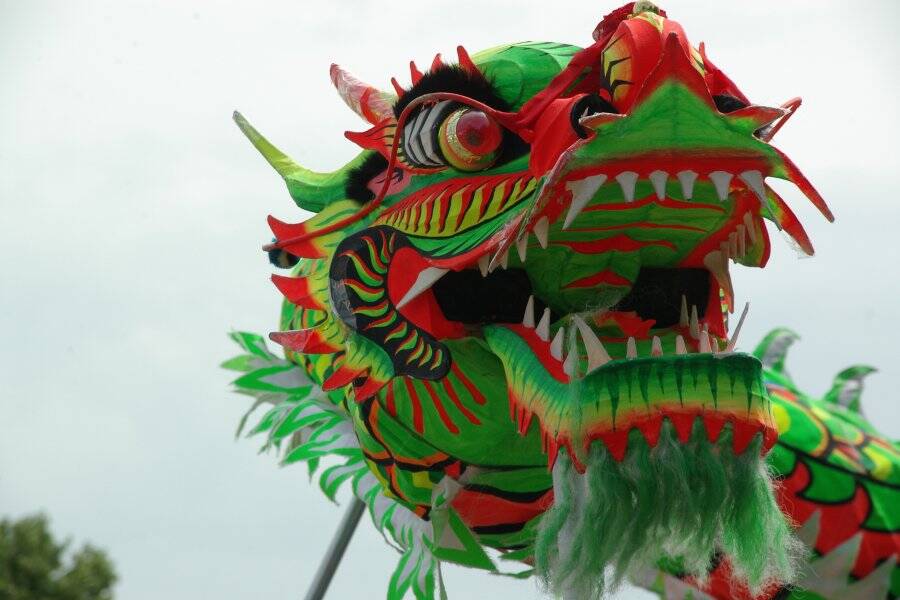
Public DomainA Chinese-style dragon carried during a celebratory ceremony.
One of the earliest examples of Chinese dragons can be traced back more than 5,000 years. In 1987, archaeologists discovered a six-and-a-half-foot-long dragon mosaic made of clam shells in a tomb in Puyang, China. The depiction dates back to the Neolithic Yangshao culture, which existed from around 5000 B.C.E to 3000 B.C.E.
There are four credible theories that could explain where the Chinese dragon, or loong, originated. The first theory posits that it came about due to the worship of a snake-like deity. The second suggests it could have had something to do with the Chinese alligator. The third implies some connection to rain, and the last said it came about as a byproduct of nature worship. The Chinese dragon has also long been associated with power, with many legends suggesting loong fathered China’s various emperors.
Still, this doesn’t quite nail down how the belief in the creatures became so prominent. Most likely, it was some combination of all of the above. Serving as a symbol of strength and combined with folk beliefs and nature worship, the image of the dragon exhibited great staying power and demanded reverence. To this day, the symbol of the red dragon found on the Zodiac is seen as one of prosperity.
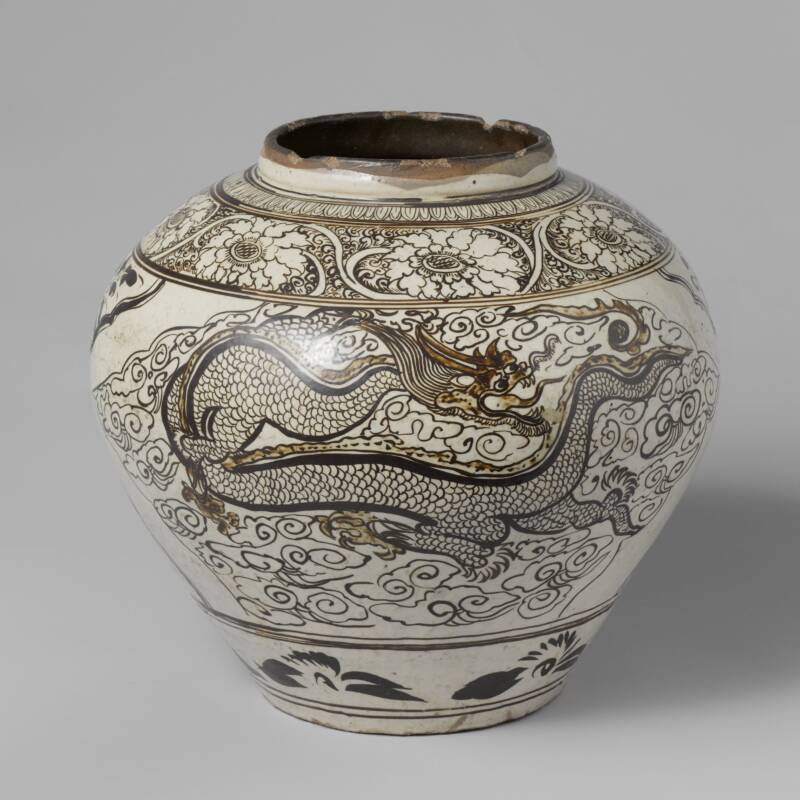
RijksmuseumA piece of pottery decorated with dragons from the Yuan Dynasty.
“In Chinese culture, people believe they’re ‘Descendants of the Dragon,'” Bao Ho, a Hong Kong-based artist, told Reader’s Digest in 2024. “From a long time ago, people prayed to dragons to get blessings and protection.” Ho added that the beasts were once seen as “fantasy creatures with magical powers” that ultimately “turned and became symbolic and a part of the Chinese culture.”
Of course, there is a difference between adopting the creature as a symbol and actually believing in the existence of dragons. Moreover, this specific example doesn’t get to the beating heart of why the mythological beasts are so pervasive across different cultures. But perhaps there is something else that could explain this — at least, according David Jones’ An Instinct for Dragons.
The Psychological Explanation For Monstrous Creatures
“Most peoples at some point in their history have believed that the dragon was real,” Jones asserts early on in his book. “Prior to the 16th century, thousands of eyewitness accounts of dragon sightings were recorded.” He then lists 24 separate towns where sightings were reported between the 11th and 13th centuries, showing just how widespread the belief in the existence of dragons really was.
Jones also tackles the issue of dinosaurs head-on, writing: “Let us begin by removing one of the most obvious parallels, the dinosaurs. They cannot model for the dragon, because dinosaurs had become extinct many millions of years before the evolution of humans.” And as for the theory that humans mistook fossils for the mythological creatures, he poses the question, “How can one recognize something as a dragon unless one already knows what a dragon is?”
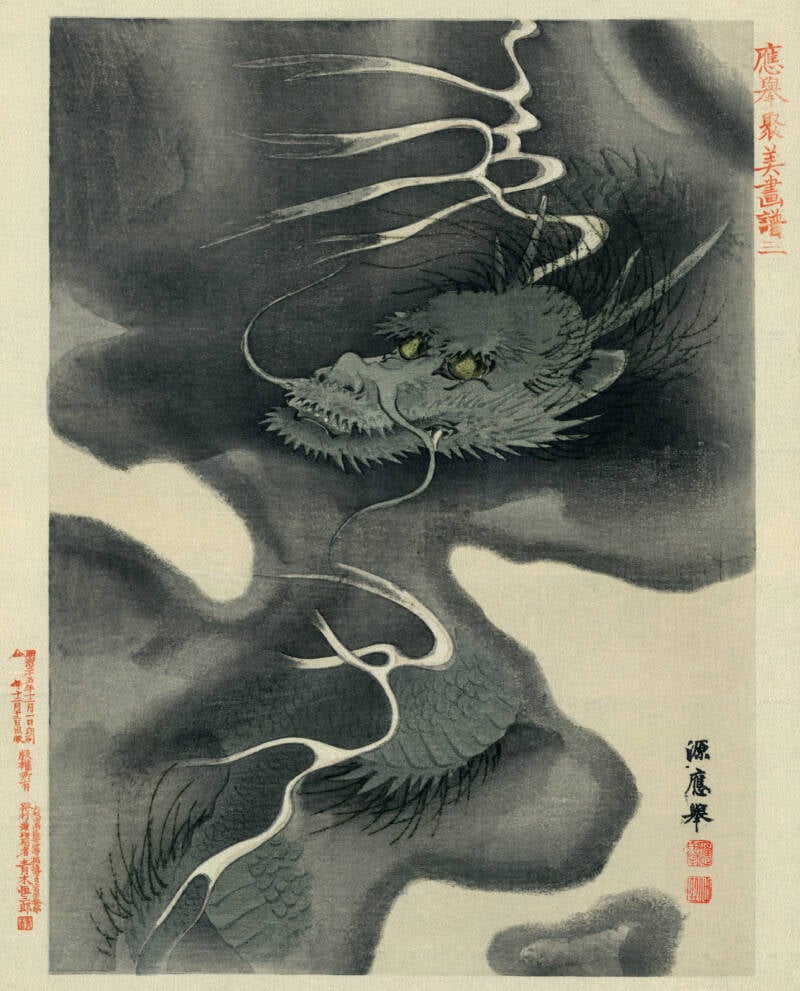
Library of CongressA dragon depicted in the Japanese ukiyo-e style.
Even prehistoric encounters with dreadful creatures such as pythons or mammoths can’t explain why the beasts have persisted in stories across the world, given how isolated certain animals always were. Yet stories about dragons could be found in ancient Greece and Rome, in the tales of the Scandinavian people and the Vikings, and in the mythology of Japan, China, and other Asian countries. Even some Native American communities told tales about reptilian monsters.
Ultimately, Jones suggests that this widespread belief in the existence of dragons could be attributed to human evolution. Monkeys have been shown to have an innate fear of snakes and large jungle cats, and given how similar monkeys and humans are genetically, it is, therefore, sensible to assume that humans, too, have some innate fear of large predators. These built-in fears, then, could have inadvertently inspired tales about dragons.
However, it’s important to note that not everyone shares Jones’ view. Many scholars do believe that people could very well have conceived of dragons and other mythical creatures based on bones they found in the dirt. Perhaps a dinosaur’s skull instilled such terror in its finder that they guessed at what it might have been and invented the most horrifying creature they could conjure: a giant beast covered in scales that flew and breathed fire.
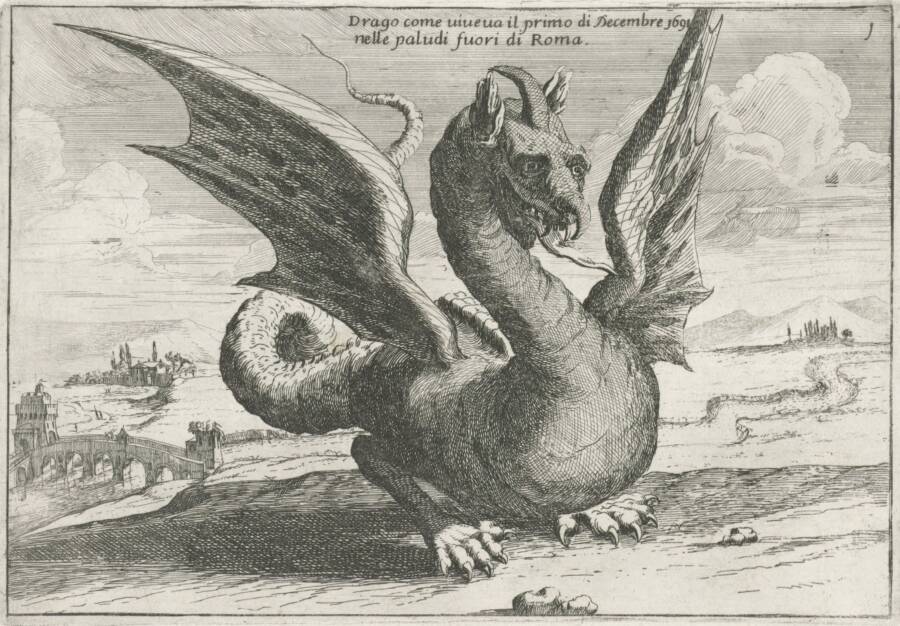
Public DomainA 17th-century illustration of a dragon that purportedly lived on the outskirts of Rome.
No matter how you look at it, there are dozens of ways humans could have come up with the idea of dragons, though it’s difficult to pinpoint exactly when, why, or how this came to be. Like many elements of ancient culture, these details have become lost to time, and the only thing we can say for certain now is that there has never been a dragon on this Earth.
That said, there are still quite a few creatures in the modern day that do resemble the fire-breathing beasts of legend.
Are Dragons Real? Animals That May Have Inspired Legends Of The Beasts
The first and most glaring example of a “real-life dragon” would be the aptly named Komodo dragon, a large monitor lizard endemic to a few small Indonesian islands. Even today, it is the largest species of lizard, with some individuals growing to a staggering 10 feet in length. Since Komodo dragons were first observed by Western scientists in 1910, it has been difficult to ignore the similarities they share with the beasts of lore.
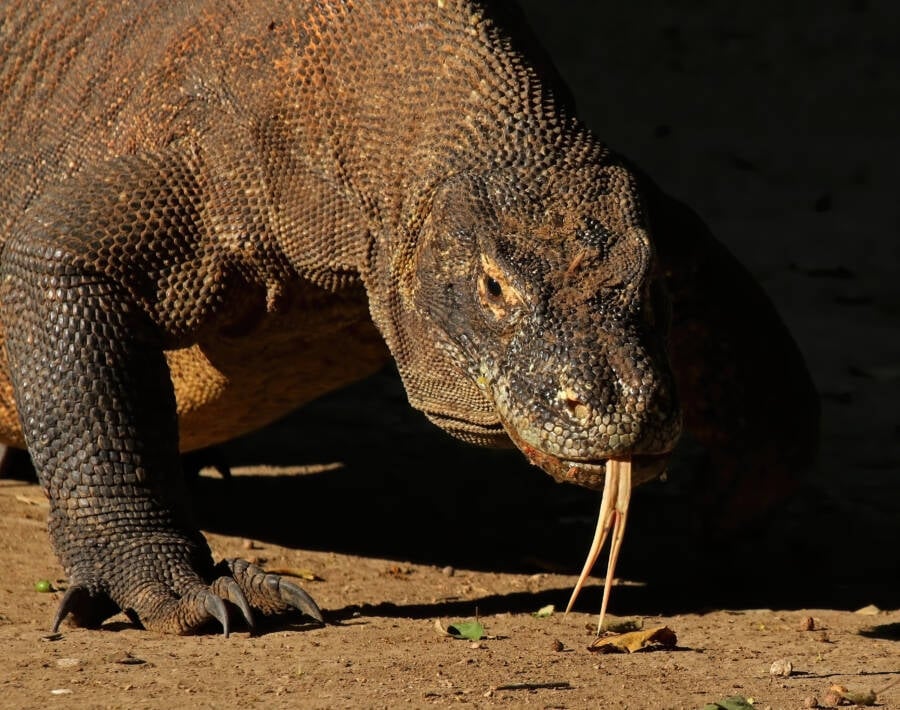
Sharp Photography/Wikimedia CommonsA Komodo dragon, the largest extant species of lizard.
Komodo dragons are dangerously fast and powerful. They are the apex predators of their ecosystem, and unlike most other reptiles, they hunt in groups to take down large deer and other prey. If any creature on Earth should carry the word “dragon” in its name, the Komodo dragon is more deserving than any other.
Likewise, crocodiles are fitting candidates for creatures that may have inspired dragons. Though we don’t refer to them as “dragons,” there’s no doubt that these large, scaly predators share much in common with their mythical cousins.
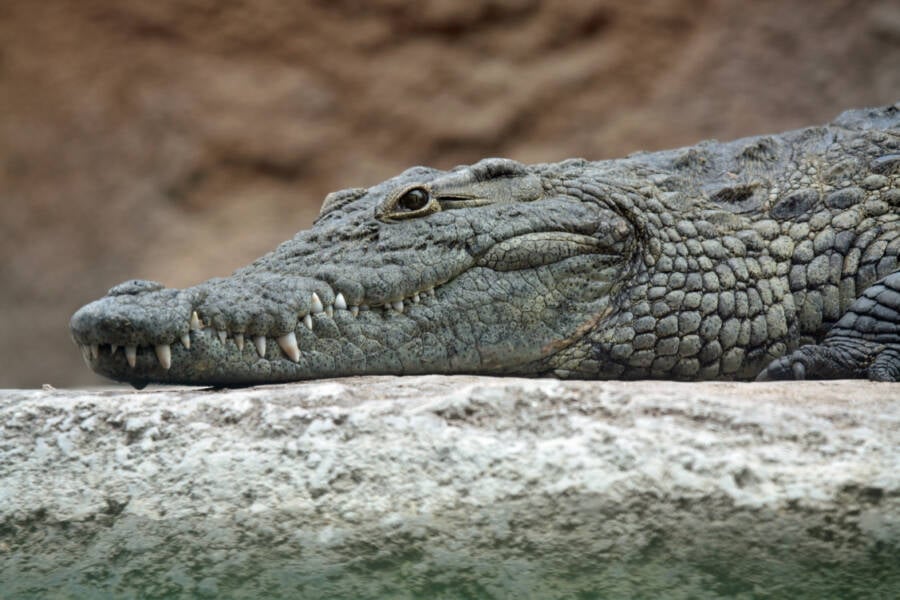
Leigh Bedford/Flickr Creative CommonsNile crocodiles can be found in bodies of freshwater throughout much of Africa.
Some scholars have suggested that whales may have inspired tales about the massive mythological creatures — though not directly. Rather, it was their large bones that washed ashore or were found on land that was previously beneath the ocean that caused ancient humans to imagine nightmarish horrors that could grow to a comparable size.
Other animals that could have potentially instilled this fear are various birds of prey, for obvious reasons. These deadly predators dominated the air, which was, until very recently, out of mankind’s reach.
So, are dragons real? In the end, it is safe to say that they have never existed, and it is highly unlikely that evolution will ever conjure up such beasts. Regardless, tales about dragons have captivated the human mind for millennia, and if current trends are anything to go by, they will continue to fascinate humans for generations to come.
Are dragons real? After going inside the history of the beasts, learn all about the truth behind the legendary sword in the stone. Then, read about Pukwudgies, the cunning cryptids of Native American lore.
